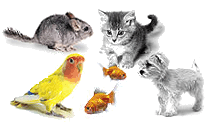
|
|
| Public Forum |
|
|
Click here to make Auspet.com your default home page |

|
 Auspet - Message Boards Auspet - Message Boards
  Articles - Dog Care & Health Articles - Dog Care & Health
  Positive Reinforcement - dogs Positive Reinforcement - dogs
|
| next newest topic | next oldest topic |
| Author | Topic: Positive Reinforcement - dogs |
Auspetian Administrator Posts: 435 |
 
Positive ReinforcementTraining plays a crucial role to ensure a happy and successful relationship between you and your dog. The foundations for a happy, well-adjusted dog are laid down during the early stages of puppy hood with a well structured training programme, which should be fun for both you and your dog. There are many methods of training, but the most satisfying for both you and your dog are methods based on positive reinforcement. This means that the dog is rewarded for correct actions. To train a dog most effectively we need to understand how dogs learn. Learning in the ‘doggy world’ consists of trying out new behaviours and seeing what happens as a consequence of this behaviour. If the behaviour (action) is followed by a good consequence, this behaviour will be repeated. One example could be begging at the table which is rewarded by getting food. If the behaviour (e.g. the begging) is, however, followed by a negative consequence (in this case, no food given), the behaviour will eventually be stopped. Effective training should work on the same principle and should be a combination of information (what you want the dog to do), motivation (a reason for your dog to do it), and timing (when to reward a good action). ‘Clicker Training’ encompasses the principle of positive reinforcement. A ‘clicker’ is a small plastic box containing a strip of metal, which produces a ‘click’ when pressed. The vital first step to ‘Clicker Training’ is finding the dog’s motivation, which for most individuals tends to be a tasty snack or play. The next step is to associate a positive meaning to the ‘click’, telling the dog ‘Yes, this is right, you have done the right thing and a reward will follow’. The first stage is therefore to associate the sound of the ‘click’ with something positive. This information needs to be delivered within very short timing (within seconds). A simple exercise to try with your puppy with the ‘Clicker Training’ method is teaching him to sit: There are many methods of training, and ‘Clicker Training’ is just one of these. The principle of positive reinforcement should, however, be adhered to all methods. In summary, we should aim to reward everything, which is positive, desirable behaviour and ignore any negative, undesirable behaviour. In practice it is not always easy to ignore all negative behaviour. Jumping up at visitors, for instance, is an undesirable behaviour, which is difficult to ignore. It would be useful to distract the dog from an undesirable behaviour by asking him for a desirable one, for example to sit. If the dog is then rewarded for sitting, he will find that sitting is more satisfying than jumping up. IP: Logged |
All times are ET (US) | next newest topic | next oldest topic |
  |
|
Contact Us | Auspet.com

| Home | Contact us | Advertise here | Jobs at Auspet | |
| © 1999-2017 AusPet.com |
